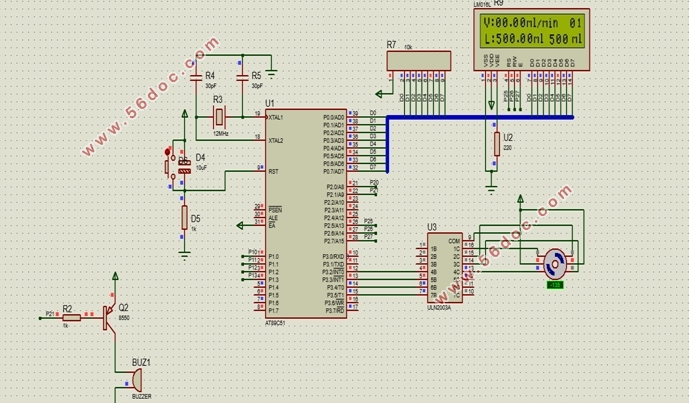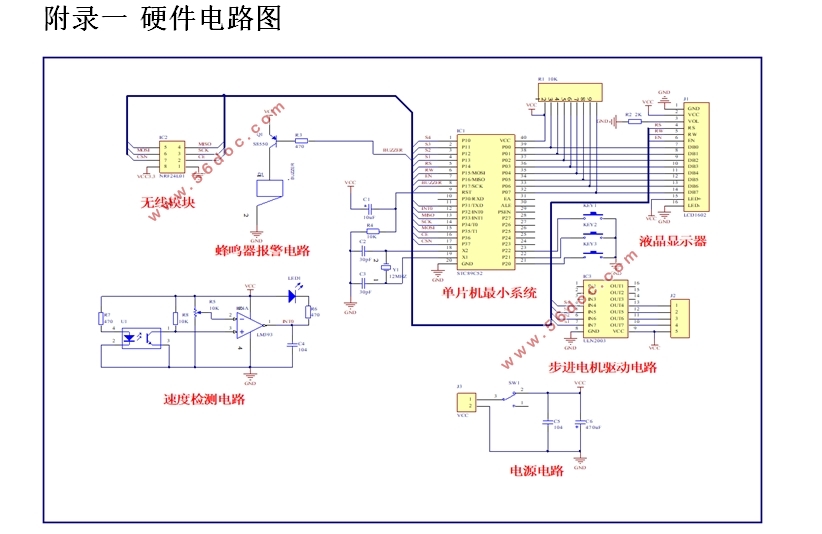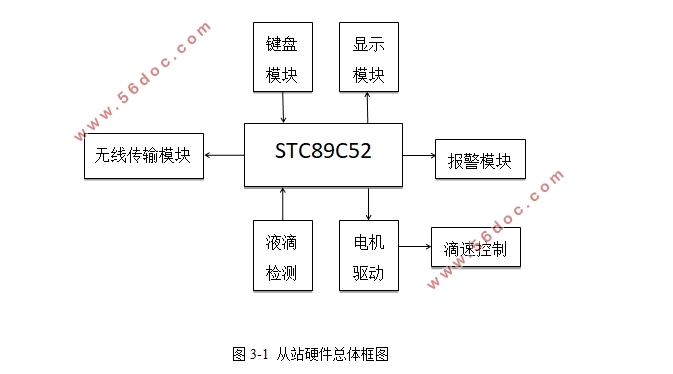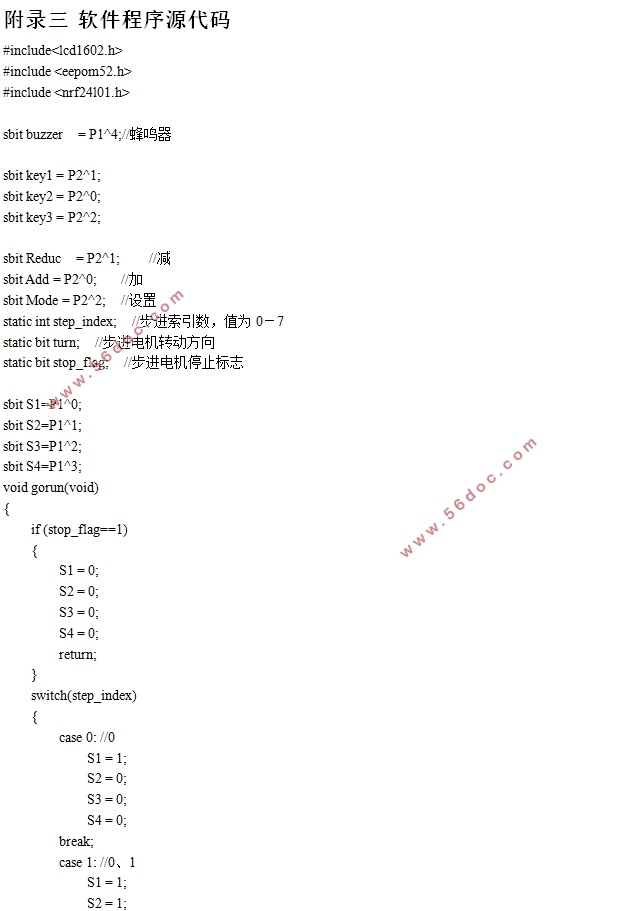基于单片机的智能点滴控制系统设计(论文18000字)
摘要
在现代医疗体系中,静脉输液是最常用的治疗手段。据统计,我国医院的输液率高达60%~70%,因为这是目前最有效的治疗方法,也是对病患体液及营养液的有效补充。然而,作为一种普遍的临床救护途径,现在的静脉输液却存在着诸多弊端。传统的静脉输液方式需要亲属或者医护人员的陪护,这带来了大量的人力浪费;在输液过程中,病人如果无人陪护,就很有可能发生意外,严重时甚至会危及病人生命安全。本文的目标正是设计一种能够远程监控输液情况的智能输液监控系统解决上述问题。
本文设计了一种以STC89C52单片机为核心的智能输液监控系统,系统能够对输液病人的静脉输液过程进行实时远程监控,在输液过程中,通过无线模块,液体流速以及药液剩余量能够实时动态显示在主从站的LCD显示屏上,当液体滴速偏离设定值时,系统可以自动检测异常并驱动电机调整液速回到正常值;当输液快要结束时,系统可以在主从站之间同时蜂鸣报警,通知医护人员前来处理。
在整体设计方案中,为了保证系统能在智能化、实用性等方面保持较高水平,所以在硬件电路设计、软件程序编写上做了优化,提高了系统的稳定性和效率,节省了成本。最后,对本智能输液监控系统所做工作进行了总结,也对后继工作提出一些意见,为该项目日后的进一步完善提供方向。
关键词:51单片机 输液监控 无线传输 步进电机
Intelligent Drip Control System Based on Single Chip Microcomputer
Abstract
Today, according to statistics, the hospital's infusion rate is as high as 60% to 70%, which is the most effective treatment method in the hospital, and is also an effective supplement to the patient's body fluids and nutrient solution. However, there are many drawbacks to the current intravenous infusion. As a general clinical ambulance, traditional intravenous infusion requires the accompanying of relatives or medical staff, which brings a lot of manpower waste; in the past infusion process, medical accidents frequently occur, if unaccompanied, It is very likely that an accident will occur, and even in serious cases, the patient's life will be compromised. This paper wants to kill the above matters.
This paper uses STC89C52 single-chip microcomputer as the system core. Displayed on the LCD display of the master and slave stations, the system can automatically detect the abnormality and drive the motor to adjust the liquid speed to return to the normal value; At the same time, an alarm is issued to notify the medical staff to come to the hospital.
In the overall design scheme, it is optimized in hardware circuit design and software program writing, which improves the stability and efficiency of the system and saves costs. Finally, the work of this intelligent infusion monitoring system was summarized, and some suggestions were put forward for the subsequent work, which provided direction for the further improvement of the project in the future.
Keywords: 51single-chip microcomputer; infusion monitoring; wireless transmission; stepper motor




目录
摘 要 I
ABSTRACT II
第一章 绪论 1
1.1课题简介 1
1.2研究背景和意义 1
1.3国内外发展和研究现状 2
1.4课题研究的思路和方法 3
1.5本章小结 4
第二章 系统基本方案的选择与论证 5
2.1 设计要求 5
2.2 主控制模块 6
2.3 滴速测量模块 6
2.4 实时液位检测模块 7
2.5 滴速控制模块 8
2.6 显示模块 8
2.7 主从站通信模块 9
2.8 本章小结 10
第三章 系统主从站硬件设计 11
3.1 系统从站硬件设计 11
3.1.1 系统从站硬件框图 11
3.1.2 从站控制模块 11
3.1.3 滴速检测模块 14
3.1.4 滴速控制模块 15
3.1.5 蜂鸣报警模块 16
3.1.6 无线传输模块 17
3.1.7 键盘模块 19
3.1.8 从站显示模块 20
3.2 系统主站硬件设计 22
3.2.1 系统主站总体框架 22
3.2.2 主站控制模块 23
3.2.3 主站无线接收模块 23
3.2.4 主站显示模块 24
3.2.5 蜂鸣报警模块 24
3.3 本章小结 25
第四章 系统主从站软件设计 26
4.1 系统软件设计 26
4.2 本章小结 33
第五章 智能输液控制系统成品展示 34
5.1智能输液控制系统软件调试及仿真 34
5.2 智能输液控制系统成品及注意事项 37
5.3 智能输液控制系统基本功能展示 40
5.4 本章小结 44
第六章 总结 47
参考文献 48
致 谢 50
附录一 硬件电路图 51
附录二 Proteus软件仿真图 52
附录三 软件程序源代码 53
|









